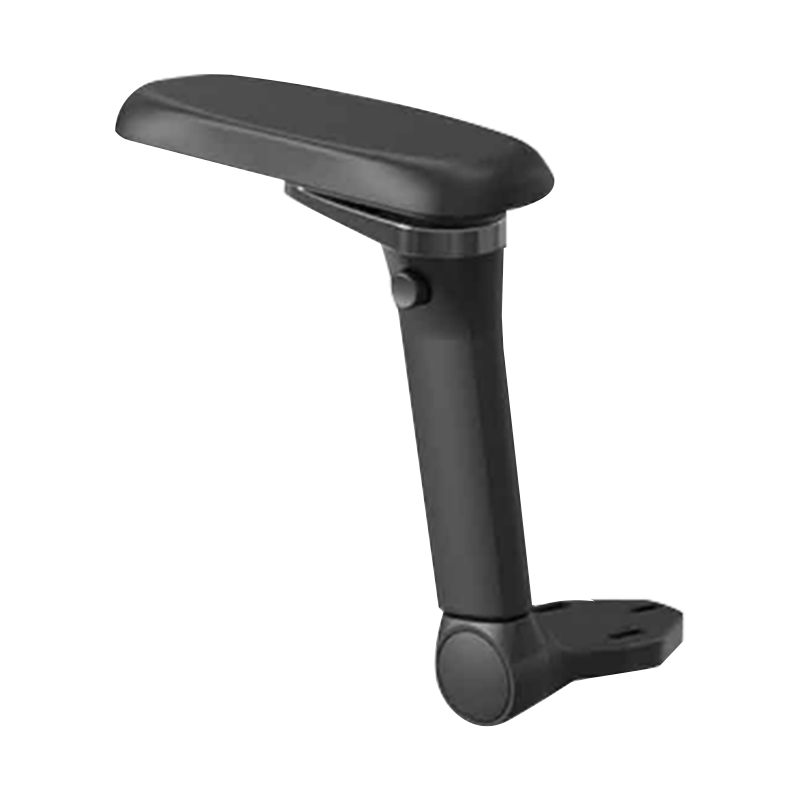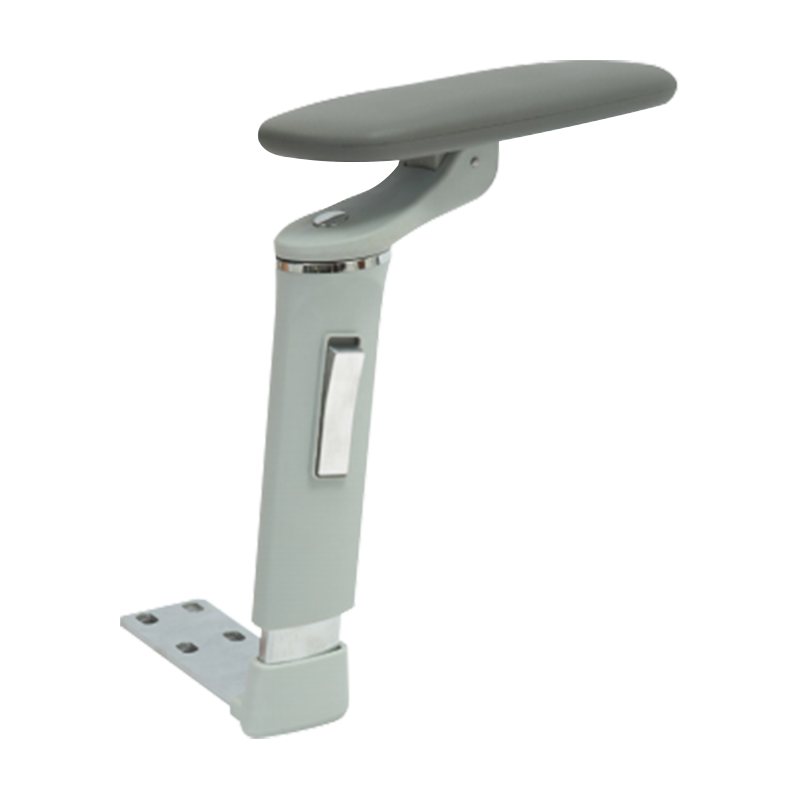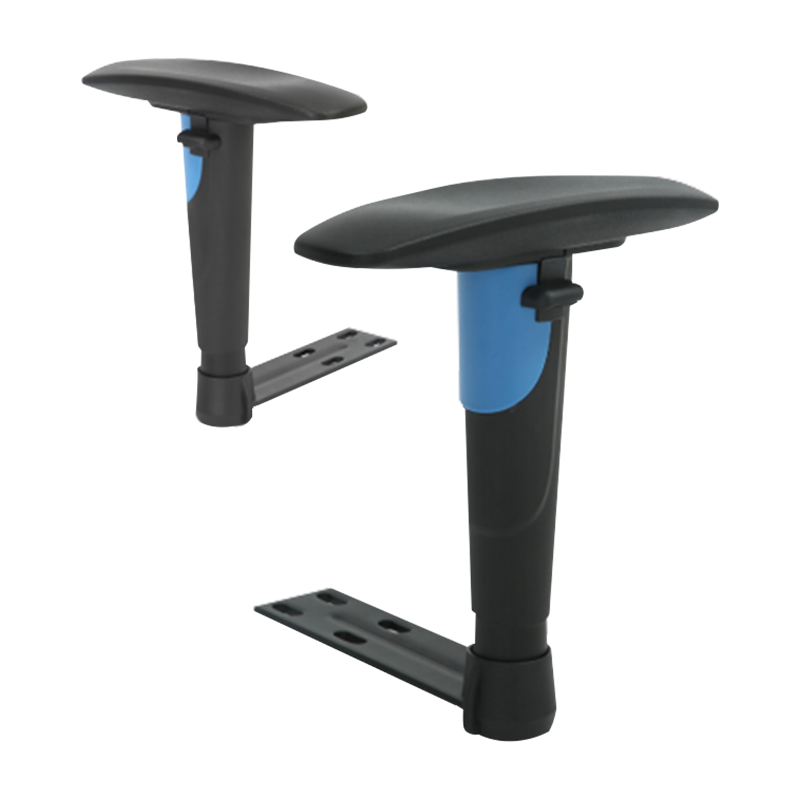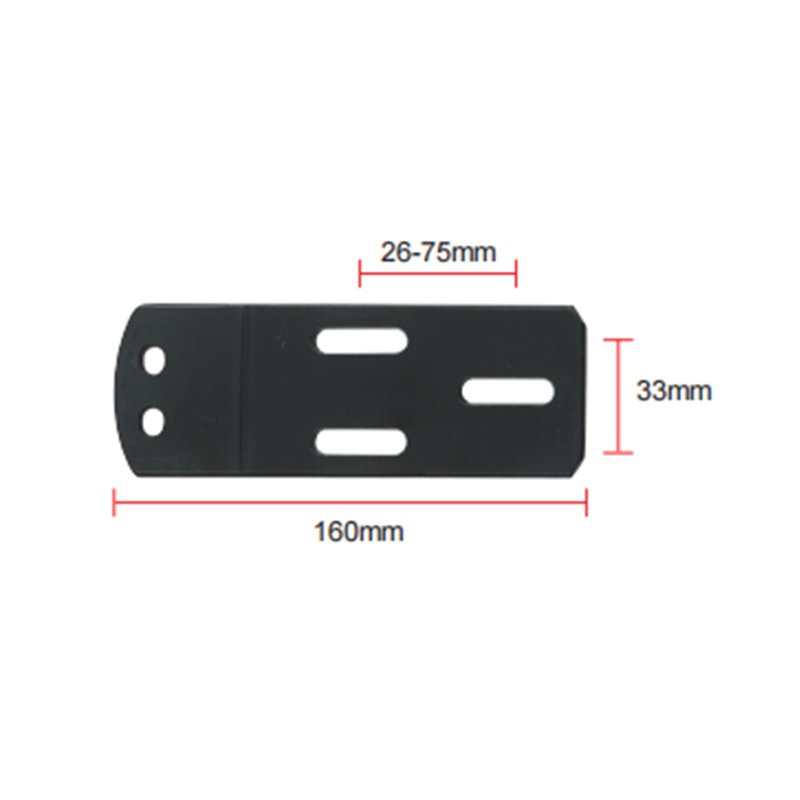Web Menu
Product Search
What are the characteristics and advantages of chrome-plated aluminum alloy multifunctional chair armrests in terms of material, process and use?
Unique advantages of chrome-plated aluminum alloy materials
Compared with ordinary aluminum alloys, chrome-plated aluminum alloy materials have significant differences in hardness, wear resistance and corrosion resistance. Aluminum alloys themselves have the characteristics of low density and light weight, which are suitable for chair armrests with weight requirements. Chrome plating is to cover the surface of aluminum alloy with a layer of chrome metal. The hardness of chrome metal is extremely high, which greatly improves the surface hardness of chrome-plated aluminum alloys, making it less likely to be scratched or worn in daily use. In terms of corrosion resistance, the chromium layer can form a dense oxide film, which effectively isolates air and moisture from the aluminum alloy matrix, greatly reduces the risk of oxidation corrosion of aluminum alloys, and prolongs the service life of the armrests.
711-5D Gaming Chair Chrome Aluminum Alloy Multifunctional Armchair Parts-5D
Steps and effects of chrome plating process
-
Pretreatment stage: basic cleaning and preparation
As the beginning of the chrome plating process, the core task of the pretreatment stage is to deeply clean the aluminum alloy armrests, comprehensively remove the oil, impurities and oxide film on the surface, and lay a solid foundation for the good combination of the subsequent chrome plating layer and the aluminum alloy matrix.
In terms of removing oil stains, a variety of cleaning methods are usually used. For lighter oil stains, alkaline cleaning agents can be used for treatment. The hydroxide ions in the alkaline cleaning agent can react with the grease in the oil stains to saponify, decomposing the grease into water-soluble fatty acid salts and glycerol, thereby removing the oil stains. For stubborn oil stains, organic solvents are used for cleaning. Organic solvents can dissolve oil stains and peel off the grease from the surface of the handrails based on the principle of like dissolves like. During the cleaning process, the aluminum alloy handrails are generally immersed in the cleaning liquid and ultrasonic cleaning equipment is used at the same time. The high-frequency vibrations generated by ultrasonic waves can form countless tiny bubbles in the liquid. These bubbles will generate a strong impact when they burst, further enhancing the cleaning effect and ensuring that the oil stains are completely removed.
Impurity removal should not be ignored either. Impurities may come from residual debris, dust, etc. in the production process. If these substances remain on the surface of the handrail, they will affect the flatness and adhesion of the chrome plating layer. Common mechanical cleaning methods, such as sandblasting, use high-speed sprayed sand to hit the handrail surface to remove impurities. At the same time, it can also form a certain degree of roughness on the surface, increase the contact area between the chrome plating layer and the substrate, and improve adhesion. However, the intensity and time of sandblasting need to be strictly controlled. Excessive intensity or long time may cause excessive damage to the aluminum alloy surface, affecting the strength and appearance of the handrail.
The removal of the oxide film requires the use of chemical methods. Although the oxide film on the surface of the aluminum alloy can play a protective role to a certain extent, it is not conducive to the adhesion of the chrome plating layer. Acidic solutions, such as a mixed solution of nitric acid and hydrofluoric acid, are usually used to etch the handrail. The acidic solution will react chemically with the oxide film and dissolve and remove it. During the operation, the concentration of the solution and the etching time must be accurately controlled. If the concentration is too high or the time is too long, the aluminum alloy substrate may be excessively corroded, resulting in a smaller size and reduced strength of the handrail; if the concentration is too low or the time is too short, the oxide film will not be completely removed, affecting the chrome plating effect.
If the cleaning is not thorough in the pre-treatment stage, the residual oil and impurities will hinder the deposition of chromium ions on the surface of the aluminum alloy during the chrome plating process. The oil will form an isolation layer on the surface, making it impossible for the chromium ions to contact the aluminum alloy matrix; the impurities will become defects in the chrome plating layer, causing bubbles and peeling in the chrome plating layer, which seriously affects the quality and service life of the handrail.
-
Pre-plating activation step: Enhance surface activity
After the pre-treatment cleaning is completed, the aluminum alloy handrail enters the pre-plating activation step. The purpose of this step is to make the aluminum alloy surface highly active through the treatment of chemical solutions, and further enhance its adhesion to the chrome plating layer.
Generally, dilute sulfuric acid or hydrochloric acid solution is used to activate the handrail. In the solution, the atoms on the surface of the aluminum alloy will react with the hydrogen ions in the solution, making the surface atoms in an unstable activated state. This process will form tiny pits and protrusions on the surface of the aluminum alloy, increase the surface roughness and specific surface area, and thus provide more sites for the deposition of chromium ions. At the same time, the activation process can also remove the extremely thin oxide film that may remain after the pre-treatment, ensuring that the chromium ions can directly contact the fresh aluminum alloy surface during the chrome plating process.
The activation treatment time and solution concentration also need to be precisely controlled. If the time is too short, the surface activation is not sufficient and the adhesion cannot be effectively improved; if the time is too long, it may cause excessive corrosion to the aluminum alloy surface. The solution concentration also needs to be adjusted according to the composition and surface state of the aluminum alloy. The appropriate concentration can ensure the activation effect without damaging the substrate.
-
Chrome plating process: the key deposition link
The chrome plating process is the core of the entire process. By immersing the treated handrail in the chrome plating solution, the chromium ions are reduced and deposited on the surface of the handrail under the action of the current to form a chrome plating layer.
The chrome plating solution usually contains chromic acid as the main component and additives such as sulfuric acid. Chromic acid will ionize chromium ions in the solution. When the handrail is connected to the circuit as a cathode, under the action of the electric field, the chromium ions in the solution will move to the surface of the handrail, obtain electrons on the surface, and be reduced to metallic chromium, thereby depositing to form a chrome plating layer.
The thickness and uniformity of the chrome plating layer are affected by many factors such as electroplating time and current density. The electroplating time directly determines the amount of chromium ion deposition. The longer the time, the thicker the chrome plating layer. However, too long electroplating time will not only increase production costs, but may also cause problems such as roughness and cracks in the chrome plating layer. The current density affects the deposition rate and distribution uniformity of chromium ions. A higher current density can speed up the chrome plating speed, but if it is too large, it will form an excessively high deposition rate locally on the handrail surface, resulting in uneven thickness of the chrome plating layer, and even scorching, blackening and other phenomena. Therefore, it is necessary to accurately adjust the electroplating time and current density according to the shape, size and quality requirements of the handrail and the chrome plating layer to ensure that a uniform, dense and moderately thick chrome plating layer is formed on the handrail surface. This can not only improve the wear resistance of the handrail, making it more scratch-resistant in daily use, but also give the handrail a bright and beautiful appearance, improving the overall quality of the product.
-
Post-treatment stage: Improve performance and protection
After chrome plating is completed, the post-treatment stage begins. This stage mainly involves cleaning and drying the chrome-plated handrails, and some of them will be sealed to further improve their anti-corrosion performance.
The purpose of cleaning is to remove the residual chrome plating solution on the surface of the handrail. If the solution remains, the chemicals in it may corrode the chrome plating layer and the aluminum alloy substrate during subsequent use. Cleaning usually adopts a multi-stage water washing method, first rinse with running water to remove most of the solution, and then rinse with deionized water to ensure that there are no residual chemicals on the surface.
The drying process also needs to be operated with caution. If the drying is not thorough, the residual moisture may form water stains on the surface of the chrome plating layer, affecting the appearance and may also cause local corrosion. Generally, hot air drying or vacuum drying is used to quickly evaporate the moisture on the surface of the handrail at the appropriate temperature and time.
Sealing treatment is an important means to further improve the anti-corrosion performance. By coating a protective film on the surface of the chrome plating layer, such as an organic coating or an inorganic coating, it can effectively isolate the air and moisture from the chrome plating layer and extend the service life of the handrail. Organic coatings can be applied by spraying or dipping to form a uniform film with good flexibility and weather resistance; inorganic coatings usually form a dense chemical film on the surface of the chrome-plated layer through chemical conversion treatment to improve its corrosion resistance.
Quality control of the production process
-
Raw material procurement: Laying the foundation for quality
Raw material procurement is the starting link of production. Strict screening of aluminum alloy materials is the first step to ensure product quality. When purchasing, the chemical composition and mechanical properties of aluminum alloys need to be fully tested. In terms of chemical composition, the content ratio of the main alloying elements in aluminum alloys directly affects its performance. For example, magnesium can improve the strength and corrosion resistance of aluminum alloys, silicon can improve its casting properties, and copper can enhance hardness and strength. Purchasing personnel need to use professional equipment such as spectrometers to accurately measure various elements in aluminum alloy materials to ensure that their composition meets the pre-set standards. If the content of a certain element is too high or too low, it will have an adverse effect on the subsequent processing performance and use performance of the handrail. For example, insufficient alloying element content may cause the handrail to be insufficiently strong and unable to withstand the pressure in normal use.
In addition to chemical composition, mechanical property testing is also indispensable. Through tensile testing, key indicators such as tensile strength, yield strength and elongation of aluminum alloy materials can be obtained. Tensile strength reflects the ability of the material to resist tensile fracture, yield strength indicates the stress value when the material begins to produce obvious plastic deformation, and elongation reflects the plasticity of the material. Only when these mechanical performance indicators meet the specified requirements can the aluminum alloy material have sufficient strength, toughness and plasticity to meet the production and processing of handrails and actual use needs. In addition, the surface quality of the raw materials cannot be ignored. It is necessary to check whether there are defects such as cracks, sand holes, inclusions, etc. on the surface of the material to avoid surface defects affecting subsequent processing and finished product quality.
-
Aluminum alloy smelting link: control core parameters
Aluminum alloy smelting is a key step in converting raw materials into suitable materials, and it is crucial to control the smelting temperature and time. In the early stage of smelting, the furnace needs to be heated to a suitable temperature to gradually melt the aluminum alloy raw materials. When the temperature is too low, the aluminum alloy cannot be fully melted, and a large number of defects such as pores and slag inclusions will be generated inside. These pores will weaken the structural strength of the handrail and easily become the source of crack expansion when subjected to external forces; slag inclusions will destroy the continuity of the material and reduce the overall performance of the handrail.
If the melting temperature is too high or the time is too long, the alloying elements in the aluminum alloy will be burned. For example, magnesium is easily oxidized and volatilized at high temperatures, resulting in a decrease in the magnesium content in the alloy, thereby weakening the strength and corrosion resistance of the aluminum alloy. At the same time, long-term high-temperature melting will also make the aluminum alloy grains coarse, reduce the toughness of the material, and make the handrail more likely to break when impacted. In order to accurately control the melting process, temperature sensors such as thermocouples are usually used in production to monitor the temperature in the furnace in real time, and the heating power is adjusted through an automated control system to ensure that the temperature is stable in a suitable range. For the melting time, it will be reasonably set according to factors such as the type of aluminum alloy and the amount of feed, and a dedicated person will be arranged to time and monitor to avoid affecting the material performance due to improper time control.
-
Molding process: guarantee size and appearance
Armrest molding is an important stage to give the product shape. Whether it is die-casting, forging or other molding processes, the dimensional accuracy and surface quality of the armrest must be strictly guaranteed. In the die-casting process, the design and manufacturing accuracy of the mold directly affect the size of the armrest. The dimensional deviation of the mold will cause the molded armrest to not meet the design requirements and cannot be assembled normally with other parts of the seat. Therefore, after the mold is processed, it is necessary to use high-precision detection equipment such as a three-coordinate measuring instrument to measure its key dimensions to ensure that the error is controlled within a very small range.
During the die-casting process, die-casting parameters such as die-casting pressure, die-casting speed, and mold temperature will also affect the quality of the armrest. If the die-casting pressure is insufficient, the aluminum alloy liquid cannot fully fill the mold cavity, which will cause problems such as lack of material and uneven surface of the armrest; if the die-casting speed is too fast, the aluminum alloy liquid will generate turbulence in the cavity and entrain air to form pores. In the forging process, the control of parameters such as forging ratio, forging temperature and number of forgings is crucial. The appropriate forging ratio can refine the aluminum alloy grains and improve the mechanical properties of the material; but improper forging temperature and number of times may cause cracks or uneven structure inside the handrail. After the handrail is formed, it is also necessary to carefully inspect its surface quality through visual inspection, touch inspection, etc. to avoid defects such as surface unevenness and burrs.
-
Chrome plating link: ensure the quality of the coating
In addition to strictly following the chrome plating process parameters, the chrome plating link is also critical for the detection of the quality of the chrome plating layer. During the chrome plating process, slight deviations in parameters such as electroplating time, current density, and chrome plating solution composition may affect the quality of the chrome plating layer. In order to ensure the stability of parameters, the production line will be equipped with special parameter monitoring equipment, such as current sensors, solution composition analyzers, etc., to monitor and automatically adjust relevant parameters in real time.
For the detection of the quality of the chrome plating layer, the salt spray test is often used to test its corrosion resistance. The chrome-plated handrail is placed in a salt spray test chamber to simulate the harsh environment of high humidity and high salt spray. The anti-corrosion performance of the chrome-plated layer is evaluated by observing whether rust or peeling occurs within the specified time. The hardness test is used to test the hardness of the chrome-plated layer. Common test methods include Rockwell hardness test and Vickers hardness test. By applying a certain load on the surface of the chrome-plated layer and measuring the size of the indentation to calculate the hardness value, it is ensured that the chrome-plated layer has sufficient hardness to meet the wear resistance requirements in daily use. In addition, the thickness uniformity of the chrome-plated layer is also tested. The thickness of the chrome-plated layer in different parts of the handrail is measured using equipment such as an X-ray fluorescence spectrometer to avoid local over-thickness or over-thinness.
-
Finished product assembly and testing: Final control
After the finished product is assembled, the handrail needs to be tested for overall performance, which is the last quality checkpoint before the product leaves the factory. In terms of load-bearing capacity testing, the corresponding load will be applied according to the design standard of the handrail to observe whether the handrail is deformed or broken. For example, the pressure exerted by the human arm during normal use and the unexpected impact force that may occur are simulated to ensure that the armrest can maintain structural stability under various working conditions.
For multifunctional armrests with movable parts, the flexibility test of the movable parts is essential. By repeatedly adjusting the height, angle and other movable parts of the armrest, check whether its operation is smooth and whether there are problems such as jamming and abnormal noise. At the same time, the connection parts of the movable parts will also be tested for strength to prevent safety hazards such as loosening and falling off during frequent use. In addition, the appearance of the armrest will be finally inspected, including whether there are scratches and color differences on the chrome plating layer, whether the surface of the armrest is smooth and flat, etc. Only products that meet the requirements can be finally shipped and delivered to the user.
Through strict quality control of each key link in the production process of chrome-plated aluminum alloy multifunctional chair armrests, from the careful selection of raw materials to the comprehensive inspection of finished products, each step embodies the pursuit of quality, ensuring that the final product can meet high standards in performance, quality and appearance, and meet the needs of the market and users.
Wide range of application scenarios
In addition to office chairs, chrome-plated aluminum alloy multifunctional chair armrests also have a wide range of applications. In the field of public transportation, such as airplane seats and high-speed rail seats, its light and high-strength characteristics meet the requirements of transportation for lightweight and safety seats. At the same time, the chrome plating allows it to remain beautiful even under frequent use. In medical places, such as hospital waiting chairs and rehabilitation training chairs, the corrosion resistance of chrome-plated aluminum alloy armrests is easy to clean and disinfect, which can effectively prevent the growth of germs, and its multifunctional characteristics can meet the use needs of different patients. In leisure places, such as theater seats and auditorium seats, its beautiful appearance and comfortable use experience improve the quality of the overall environment.
Manifestation and realization of multifunctional characteristics
The multifunctional characteristics of the chrome-plated aluminum alloy multifunctional chair armrests are mainly reflected in adjustability, comfort and practicality. In terms of adjustability, through special structural design, such as the use of slide rails, hinges and other components, the height and angle of the armrests can be adjusted to adapt to users of different heights and usage habits. In terms of comfort, The surface shape of the armrest is ergonomically designed to fit the curve of the arm and reduce the pressure on the arm caused by long-term use. Practicality is reflected in some additional functions. For example, some armrests have storage space for small objects; some armrests have integrated charging ports to meet the charging needs of users' electronic devices. These functions are achieved through reasonable structural design and component combination, which not only ensures the strength and stability of the armrest, but also gives it more use value.
Environmental protection and recycling advantages
Compared with chair armrests made of other materials, chrome-plated aluminum alloy multifunctional chair armrests have obvious advantages in environmental protection and recyclability. Aluminum alloy itself is a recyclable metal material. After the service life of the armrest ends, it can be recycled and remelted to make new aluminum alloy products, reducing resource waste. The chrome plating process is also constantly improving in terms of environmental protection. The new chrome plating process uses more environmentally friendly electroplating liquid and treatment methods to reduce the risk of heavy metal pollution. Moreover, the chrome-plated aluminum alloy armrest has a long service life, which reduces the frequency of product replacement and indirectly reduces energy consumption and environmental pollution in the production process.
The influence of melting factors on performance
During the production process, the melting temperature and time of aluminum alloy have a significant impact on the strength and toughness of the armrest. The appropriate melting temperature can fully melt the aluminum alloy and ensure the uniform distribution of alloy elements, thereby improving the strength and toughness of the armrest. If the temperature is too high, the low-melting-point alloy elements in the aluminum alloy will volatilize in large quantities, resulting in changes in the alloy composition and reducing the mechanical properties of the armrest; if the temperature is too low, the aluminum alloy cannot be completely melted, and there are unmelted metal particles inside, which will form stress concentration points, reduce the toughness of the armrest, and make it easy to break during use. Melting time is also important. If the time is too short, the alloy elements cannot be fully dissolved and diffused, affecting the performance of the armrest; if the time is too long, it will increase energy consumption, and may also cause the aluminum alloy to absorb air, produce defects such as pores, and reduce the strength and toughness of the armrest.
Considerations of appearance design
The appearance design of the chrome-plated aluminum alloy multifunctional chair armrest has a unique idea in balancing aesthetics and practicality. In terms of color, the chrome plating itself gives the armrest a shiny, metallic appearance, and the most common color is bright silver. This color is not only fashionable and beautiful, but also improves the overall grade of the chair. In terms of styling design, it will be designed in combination with ergonomics and usage scenarios. For example, on office chairs, the armrests are simple and smooth, which is convenient for users to place and move their arms naturally; on leisure chairs, more rounded and curvy shapes may be used to increase comfort and visual beauty. At the same time, the edge treatment of the armrests will also pay attention to details to avoid sharp corners and prevent scratches on users.
Benefits to user health
Using chrome-plated aluminum alloy multifunctional chair armrests can bring users many health benefits. Its ergonomic design can provide good support for arms and shoulders. In office scenes, for users who use computers for a long time, armrests of appropriate height and angle can reduce the pressure on arms and shoulders, avoid muscle fatigue and soreness caused by hanging arms or improper postures, and reduce the risk of diseases such as periarthritis of the shoulder and cervical spondylosis. For people with limited mobility or the elderly, a sturdy and moderately high armrest can assist them in getting up and sitting down, provide safety protection, and reduce the possibility of falling and getting injured.
Maintenance points
With the increase of service life, the maintenance of the chrome-plated aluminum alloy multifunctional chair armrests needs to pay attention to some key points. In daily use, avoid scratching the surface of the armrest with sharp objects to prevent damage to the chrome plating. When cleaning, use a soft damp cloth to wipe. If there are stubborn stains, use a neutral detergent and avoid using acidic or alkaline detergents to avoid corrosion of the chrome plating and the aluminum alloy substrate. For adjustable armrest parts, regularly check whether their connection parts are loose, tighten them in time, and ensure the normal use of the armrest. If the chrome plating layer is found to be partially detached, it should be repaired in time to prevent oxidation corrosion of the aluminum alloy substrate after exposure, which will affect the performance and appearance of the armrest.
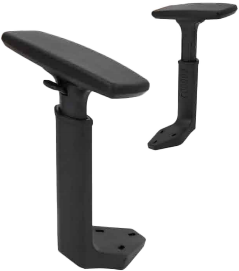
 Feel free to contact us
Feel free to contact us
- Product Fast Links
- Office Chair Armrest
- Hardware Steel Plate
- Polyurethane PU Surface
- Casters
- Contact Information
- Tangpu Industrial Park, Anji County, Huzhou City, Zhejiang Province, China
- [email protected]
- +86-13567973388



 English
English  Español
Español  عربى
عربى 
